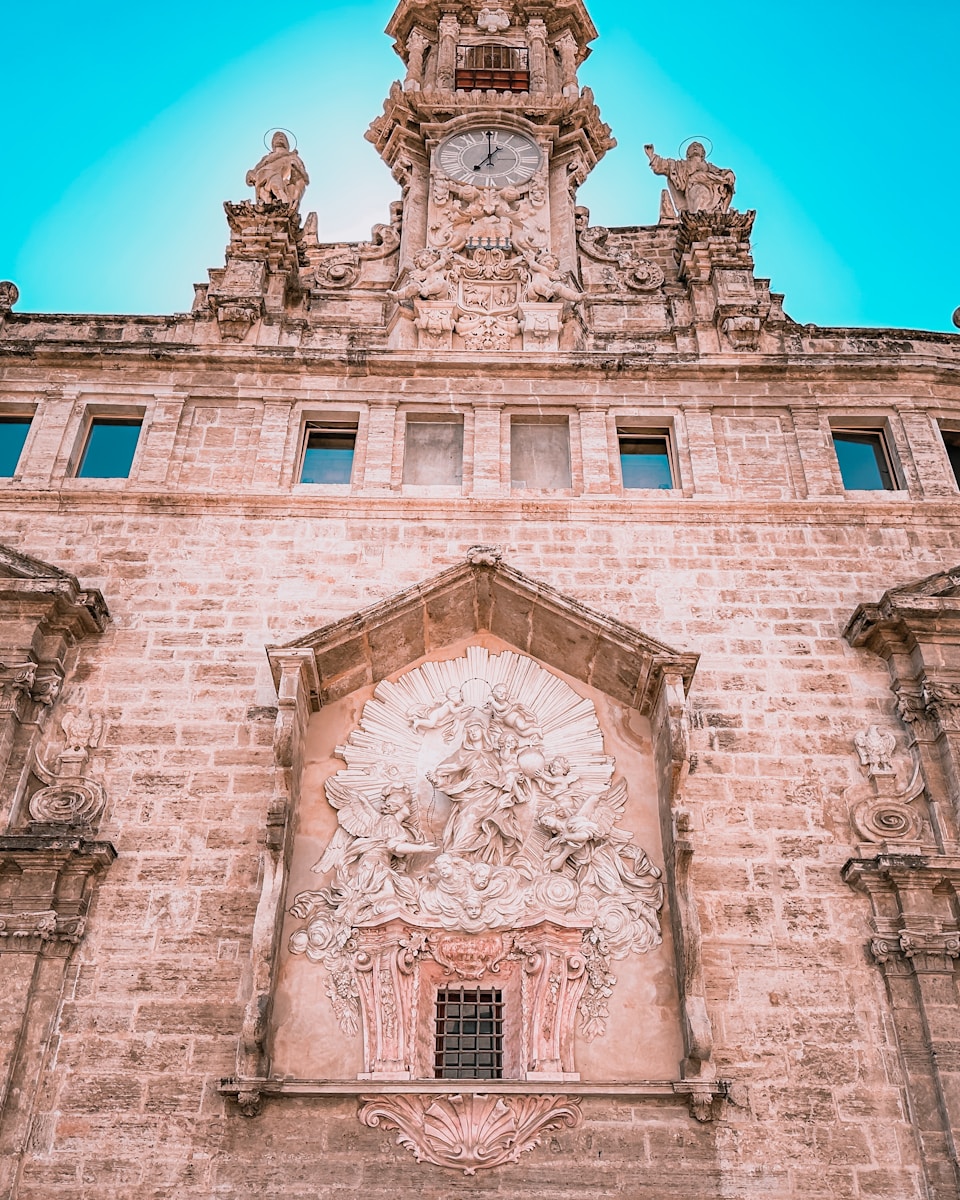Support our educational content for free when you purchase through links on our site. Learn more
Why Do We Celebrate National Hispanic Month? Discover 15 Fascinating Reasons! 🎉 [2024]
Have you ever wondered why we set aside a whole month to celebrate Hispanic heritage? National Hispanic Heritage Month, running from September 15 to October 15, is more than just a calendar highlight; it’s a vibrant tapestry of history, culture, and contributions that have shaped the United States. Imagine walking through a bustling festival filled with the sounds of salsa music, the aromas of delicious traditional foods, and the vibrant colors of cultural attire—this is just a glimpse of what this month represents!
But here’s a fun fact: did you know that September 15 marks the independence day for five Latin American countries? This unique timing is just one of the many reasons we celebrate! This article will take you through 15 compelling reasons why National Hispanic Month is important, from its rich history to the incredible contributions of Hispanic Americans. Trust us; you won’t want to miss out on these insights!
Key Takeaways
- Cultural Celebration: National Hispanic Month honors the rich cultural diversity of Hispanic and Latino Americans.
- Historical Significance: The month commemorates the independence days of several Latin American countries, starting on September 15.
- Influential Figures: The month highlights key contributions from notable Hispanic figures in various fields.
- Community Engagement: It encourages participation in local events, supporting Hispanic-owned businesses, and celebrating cultural traditions.
- Educational Resources: Numerous resources are available for educators and the public to learn about Hispanic heritage and history.
Ready to explore the vibrant world of Hispanic culture? Don’t forget to check out our recommended books and resources to dive deeper into this fascinating celebration! 🛒✨
Table of Contents
- Quick Tips and Facts about National Hispanic Month
- The Rich History Behind National Hispanic Heritage Month
- Understanding the Difference: Hispanic vs. Latino
- When Does National Hispanic Heritage Month Take Place?
- Why is National Hispanic Heritage Month So Important?
- Creative Ways to Celebrate National Hispanic Heritage Month
- Spotlighting Key Figures in Latino History
- Delicious Food & Recipes to Honor Hispanic Heritage
- Exciting Events & Celebrations During Hispanic Heritage Month
- Educator Resources for Teaching About Hispanic Heritage
- Legal Framework Supporting Hispanic Heritage Month
- Stay Updated: Get the Latest News on Hispanic Heritage Month
- Join the Conversation: Social Media and Hispanic Heritage Month
- Conclusion
- Recommended Links
- FAQ
- Reference Links
1. Quick Tips and Facts about National Hispanic Month 🗓️🎉
Want to impress your friends with your knowledge of National Hispanic Heritage Month? Here are some quick tidbits to get you started:
- It’s not just a month! 🤯 It kicks off on September 15th and runs through October 15th, encompassing 30 days of celebration.
- Why September 15th? 🤔 This date marks the anniversary of independence for several Latin American countries: Costa Rica, El Salvador, Guatemala, Honduras, and Nicaragua. Talk about a party! 🥳
- More Independence Days! 🎉 Mexico joins the fiesta on September 16th, followed by Chile on September 18th, and Belize on September 21st!
- It’s the law! 🏛️ President Lyndon Johnson first declared Hispanic Heritage Week in 1968. It was later expanded to a month by President Ronald Reagan in 1988 and officially became law on August 17, 1988 (Public Law 100-402).
- It’s about more than just fiestas! (though those are fun too! 😉) This month is about recognizing the incredible contributions of Hispanic Americans to the U.S. in all areas of society.
Want to learn more about why we celebrate Hispanic Awareness Month? Click here!
2. The Rich History Behind National Hispanic Heritage Month 📚

National Hispanic Heritage Month isn’t just a modern invention. It’s a celebration rooted in a deep and vibrant history.
The Spark of Recognition
The journey began in 1968 when President Lyndon B. Johnson, recognizing the growing presence and influence of Hispanic Americans, declared the week of September 15th as “National Hispanic Heritage Week.” This marked the first formal acknowledgment of the contributions of Hispanic Americans to the United States.
Expanding the Celebration
Almost two decades later, the celebration evolved. In 1988, President Ronald Reagan signed a bill expanding the week-long observance into a full month, encompassing September 15th to October 15th. This expansion signified a growing awareness and appreciation for the richness and diversity of Hispanic heritage.
Why These Dates?
The timing is significant. September 15th marks the anniversary of independence for several Latin American countries: Costa Rica, El Salvador, Guatemala, Honduras, and Nicaragua. Mexico follows suit with its independence day on September 16th, Chile on September 18th, and Belize on September 21st.
By encompassing these important historical dates, National Hispanic Heritage Month pays homage to the independence and self-determination of Latin American nations, recognizing the shared history and cultural connections between the United States and its Latin American neighbors.
3. Understanding the Difference: Hispanic vs. Latino 🤔
The terms “Hispanic” and “Latino” are often used interchangeably, but they actually have distinct meanings. Understanding the difference is key to appreciating the nuances of identity within this diverse community.
-
Hispanic: This term refers to people, cultures, or languages that originate from Spain. It emphasizes the Spanish language and cultural heritage shared by people from Spain and its former colonies.
-
Latino/Latina/Latinx: This term encompasses people, cultures, or languages from Latin America, including South America, Central America, and the Caribbean. It emphasizes geographical origin rather than language. For example, a person from Brazil is Latino but not Hispanic, as Portuguese is the official language of Brazil.
So, which term is correct? It depends on the individual and their preference. Some people identify as both Hispanic and Latino, while others prefer one term over the other. The most important thing is to respect individual choices and use the terms that people use to self-identify.
4. When Does National Hispanic Heritage Month Take Place? 📅
Mark your calendars! National Hispanic Heritage Month is celebrated annually from September 15th to October 15th.
This timeframe was strategically chosen to coincide with the independence days of several Latin American countries, turning the celebration into a vibrant tapestry of historical significance and cultural pride.
5. Why is National Hispanic Heritage Month So Important? 🤔
In a nation built on the contributions of diverse communities, National Hispanic Heritage Month stands as a testament to the profound impact of Hispanic Americans. It’s a time for reflection, recognition, and celebration. But why is it so important?
-
Recognizing Contributions: Hispanic Americans have shaped the fabric of the United States since its inception. From art and literature to science and politics, their contributions have enriched every aspect of American society. National Hispanic Heritage Month provides a platform to acknowledge and celebrate these achievements, ensuring that their stories are told and their legacies are remembered.
-
Celebrating Culture: The Hispanic community is a vibrant tapestry of cultures, traditions, languages, and histories. This month offers a unique opportunity to showcase the beauty and diversity of this heritage, sharing its richness with the wider American public. From lively music and dance to flavorful cuisine and colorful art, there’s something for everyone to enjoy and appreciate.
-
Inspiring Future Generations: By highlighting the achievements of Hispanic Americans, this month serves as a source of inspiration for younger generations. It showcases the possibilities that lie ahead and encourages young people to embrace their heritage, pursue their dreams, and make their own mark on the world.
-
Promoting Understanding: In an increasingly interconnected world, fostering understanding and appreciation for different cultures is more important than ever. National Hispanic Heritage Month provides a platform for dialogue, breaking down stereotypes and building bridges of understanding between communities.
6. Creative Ways to Celebrate National Hispanic Heritage Month 🥳
Ready to immerse yourself in the spirit of National Hispanic Heritage Month? Here are some fun and engaging ways to celebrate:
-
Attend Cultural Events: Check out local festivals, concerts, dance performances, art exhibitions, and film screenings that highlight Hispanic culture. Many communities organize special events throughout the month, offering a chance to experience the vibrancy and diversity of Hispanic traditions firsthand. Find Hispanic Heritage Month Events near you!
-
Explore Hispanic Cuisine: Embark on a culinary adventure by trying out traditional dishes from different Latin American countries. From savory empanadas and flavorful paella to refreshing ceviche and decadent tres leches cake, there’s a world of flavors to discover. Host a potluck dinner with friends and family, each person bringing a dish to share.
-
Learn Some Spanish (or Portuguese!): Challenge yourself to learn a few basic phrases in Spanish or Portuguese. Even a few words can go a long way in communicating with Spanish and Portuguese speakers and showing your appreciation for their culture. There are plenty of language learning apps and online resources available to get you started.
-
Support Hispanic-Owned Businesses: Make a conscious effort to support Hispanic-owned businesses in your community. Whether it’s a local restaurant, bookstore, clothing store, or any other type of business, your patronage can make a difference.
-
Read Books by Hispanic Authors: Dive into the world of Hispanic literature by exploring works by renowned authors such as Gabriel García Márquez, Isabel Allende, Junot Díaz, Julia Alvarez, and Sandra Cisneros. Their stories offer unique perspectives, captivating narratives, and insights into Hispanic culture and experiences.
-
Watch Films and TV Shows with Hispanic Representation: Expand your cinematic horizons by watching films and TV shows directed by Hispanic filmmakers or featuring Hispanic actors in prominent roles. From classics like “Like Water for Chocolate” and “Amores Perros” to modern hits like “Roma” and “Jane the Virgin,” there’s a diverse range of stories to discover.
-
Learn About Hispanic History and Heritage: Take some time to delve deeper into the history and heritage of Hispanic Americans. Visit museums, historical sites, or online resources to learn about the contributions, struggles, and triumphs of this community throughout U.S. history.
-
Get Crafty: Embrace your creative side by trying out traditional Hispanic crafts. From colorful alebrijes (Mexican folk art sculptures) to intricate mola textiles (made by the Guna people of Panama) to beautiful papel picado (perforated paper banners), there are plenty of options to explore.
-
Share Your Experiences on Social Media: Spread the word about National Hispanic Heritage Month and share your experiences celebrating Hispanic culture on social media. Use the hashtag #HispanicHeritageMonth to connect with others and join the conversation.
7. Spotlighting Key Figures in Latino History 🦸♀️🦸♂️

Hispanic Heritage Month is the perfect time to learn about the countless influential Latinos who have shaped the United States and the world. Here are just a few examples:
-
Sonia Sotomayor: The first Hispanic and third woman to serve on the U.S. Supreme Court. Her appointment was a landmark moment in American history, breaking down barriers and inspiring countless individuals.
-
Ellen Ochoa: A former astronaut and the first Hispanic woman in space. Her pioneering journey has inspired generations of young people to reach for the stars.
-
Roberto Clemente: A legendary baseball player who broke racial barriers in the sport and became an icon for his humanitarian work. His legacy continues to inspire athletes and fans alike.
-
Celia Cruz: Known as the “Queen of Salsa,” she was a powerful vocalist and performer who popularized Latin music around the world. Her music transcended borders and brought people together.
-
Cesar Chavez: A labor leader and civil rights activist who co-founded the National Farm Workers Association, later known as the United Farm Workers (UFW). He dedicated his life to improving the lives of farmworkers, fighting for better wages, working conditions, and social justice.
-
Lin-Manuel Miranda: A composer, lyricist, playwright, and actor who has revolutionized Broadway with his groundbreaking musicals “Hamilton” and “In the Heights.” His work celebrates diversity, tells important stories, and inspires audiences of all backgrounds.
These are just a handful of the many remarkable individuals who have left an indelible mark on history. By learning about their lives and accomplishments, we gain a deeper appreciation for the richness and diversity of the Hispanic community.
8. Delicious Food & Recipes to Honor Hispanic Heritage 🌮🍲
One of the most delicious ways to celebrate Hispanic Heritage Month is by indulging in the incredible variety of flavors that Hispanic cuisine has to offer. From savory dishes to sweet treats, there’s something to tantalize every taste bud.
Must-Try Dishes:
-
Empanadas: These savory pastries are a staple in many Latin American countries and come in countless variations. They can be filled with meat, cheese, vegetables, or a combination of ingredients, and are typically baked or fried to golden perfection.
-
Arepas: These cornmeal cakes are a versatile dish that can be eaten for breakfast, lunch, or dinner. They can be grilled, baked, or fried, and are often split open and filled with various ingredients like cheese, beans, meat, or avocado.
-
Paella: This iconic Spanish dish is a feast for the senses, with its vibrant colors, aromatic flavors, and impressive presentation. It typically consists of saffron-infused rice cooked with seafood, chicken, chorizo, vegetables, and herbs.
-
Ceviche: This refreshing dish is perfect for warm weather and is made with fresh raw fish cured in citrus juices, onions, cilantro, and spices. It’s often served with sweet potato, avocado, or corn.
-
Tres Leches Cake: This decadent dessert is a sponge cake soaked in three types of milk: evaporated milk, condensed milk, and heavy cream. It’s often topped with whipped cream and fresh fruit.
Resources for Recipes and Culinary Inspiration:
- “The Complete Book of Mexican Cooking” by Elizabeth Lambert Ortiz
- “Gran Cocina Latina: The Food of Latin America” by Maricel E. Presilla
- “Pati’s Mexican Table” by Pati Jinich
- Websites: Allrecipes.com, Food & Wine, Epicurious
9. Exciting Events & Celebrations During Hispanic Heritage Month 🎊🎉
Hispanic Heritage Month is a time for vibrant celebrations and engaging cultural events across the United States. From lively festivals to thought-provoking art exhibitions, there’s something for everyone to enjoy and appreciate.
Types of Events to Look Out For:
-
Festivals: Many cities host large-scale festivals featuring live music, dance performances, food vendors, arts and crafts, and family-friendly activities. These festivals offer a fantastic opportunity to immerse yourself in Hispanic culture and traditions.
-
Concerts: Experience the rhythm and energy of Hispanic music by attending concerts featuring renowned Latin artists or local bands. From salsa and merengue to cumbia and reggaeton, there’s a genre to suit every musical taste.
-
Dance Performances: Be captivated by the beauty and passion of Hispanic dance by attending performances of traditional dances like flamenco, tango, salsa, or bachata. Many dance companies and studios offer special performances during Hispanic Heritage Month.
-
Art Exhibitions: Explore the creativity and diversity of Hispanic art by visiting museums and galleries showcasing works by Hispanic artists. From paintings and sculptures to photography and mixed media, there’s a wide range of artistic expressions to discover.
-
Film Screenings: Catch screenings of classic and contemporary films by Hispanic filmmakers or featuring Hispanic actors and stories. These screenings often include Q&A sessions with directors, actors, or film experts, providing deeper insights into the filmmaking process and cultural significance.
-
Literary Events: Attend book readings, author talks, and literary festivals featuring Hispanic authors. These events offer a chance to engage with authors, learn about their creative processes, and discuss their works.
Finding Events in Your Area:
-
Check local event listings: Websites and publications like Time Out, Eventbrite, and local newspapers often have dedicated sections for Hispanic Heritage Month events.
-
Visit community centers and cultural organizations: Many community centers and cultural organizations host special events and programs during Hispanic Heritage Month.
-
Follow social media: Follow your city’s official social media accounts, as well as those of local museums, cultural organizations, and event promoters, to stay updated on upcoming events.
10. Educator Resources for Teaching About Hispanic Heritage 🍎📚
Teaching students about Hispanic Heritage Month is a wonderful opportunity to celebrate diversity, foster cultural understanding, and inspire young minds. Here are some valuable resources for educators:
Lesson Plans and Activities:
-
The Smithsonian Latino Center: Offers a wealth of educational resources, including lesson plans, activities, videos, and primary sources, covering a wide range of topics related to Latino history, culture, and art.
-
National Hispanic Heritage Month Website: Provides links to educational resources from various government agencies, including the Library of Congress, the National Archives, and the National Endowment for the Humanities.
-
PBS LearningMedia: Offers a collection of videos, interactives, and lesson plans for grades K-12, covering topics such as Latino history, culture, immigration, and civil rights.
-
Teaching Tolerance: Provides free resources and professional development opportunities to help educators create inclusive and equitable classrooms, including materials on teaching about Hispanic Heritage Month.
Books for the Classroom:
-
“The Dreamer” by Pam Muñoz Ryan: A beautifully illustrated picture book that tells the story of a young Pablo Neruda, one of Chile’s most beloved poets.
-
“Esperanza Rising” by Pam Muñoz Ryan: A historical novel that follows the journey of a young girl who is forced to flee her wealthy life in Mexico and become a farmworker in California during the Great Depression.
-
“The House on Mango Street” by Sandra Cisneros: A coming-of-age novel told in a series of vignettes that captures the experiences of a young Latina girl growing up in Chicago.
-
“Brown Girl Dreaming” by Jacqueline Woodson: A memoir in verse that tells the story of the author’s childhood growing up as an African American girl in the 1960s and 1970s, exploring themes of race, identity, and family.
Tips for Engaging Students:
-
Incorporate music and dance: Play traditional Hispanic music, teach students some basic dance steps, or invite a local dance group to perform for the class.
-
Try out traditional recipes: Prepare simple Hispanic dishes with students, teaching them about the ingredients and cultural significance of the food.
-
Invite guest speakers: Invite Hispanic professionals, artists, or community members to share their stories, experiences, and perspectives with students.
-
Create a classroom museum: Have students research and create displays about different aspects of Hispanic culture, such as art, music, food, or history.
11. Legal Framework Supporting Hispanic Heritage Month ⚖️
The celebration of National Hispanic Heritage Month isn’t just a matter of tradition; it’s firmly established in U.S. law.
Public Law 100-402
The legal foundation for National Hispanic Heritage Month lies in Public Law 100-402, which was enacted on August 17, 1988. This law officially expanded the week-long observance that had been in place since 1968 into a full month, running from September 15th to October 15th.
Presidential Proclamations
While Public Law 100-402 provides the legal framework, it’s the annual presidential proclamation that officially recognizes and commemorates National Hispanic Heritage Month each year. These proclamations typically highlight the contributions of Hispanic Americans, celebrate their heritage, and encourage all Americans to participate in the month’s observances.
Significance of Legal Recognition
The legal recognition of National Hispanic Heritage Month holds significant weight:
-
Formal Acknowledgment: It demonstrates the government’s formal acknowledgment and appreciation for the contributions of Hispanic Americans to the nation’s history, culture, and progress.
-
Permanent Observance: It ensures that the celebration of Hispanic heritage is a permanent fixture on the national calendar, not subject to the whims of changing political landscapes.
-
Platform for Advocacy: It provides a platform for advocacy groups and community leaders to raise awareness about issues affecting the Hispanic community and advocate for policies that promote equality and opportunity.
12. Stay Updated: Get the Latest News on Hispanic Heritage Month 📰💻
Staying informed about Hispanic Heritage Month events, initiatives, and news is easier than ever thanks to a wealth of online resources:
Websites:
-
Hispanic Heritage Month.gov: The official website for National Hispanic Heritage Month, providing information about the history of the observance, presidential proclamations, event listings, and educational resources.
-
The Hispanic Federation: A leading Latino nonprofit organization dedicated to improving the lives of Hispanic Americans. Their website provides news, resources, and information about their programs and advocacy efforts.
-
The National Council of La Raza (NCLR): The largest national Hispanic civil rights and advocacy organization in the United States. Their website offers news, analysis, and resources on issues affecting the Hispanic community.
-
NBC Latino, ABC News – Hispanic Heritage, and other news outlets: Many major news outlets have dedicated sections or verticals covering Hispanic news and culture.
Social Media:
-
Follow relevant hashtags: Stay updated on the latest news and conversations by following hashtags like #HispanicHeritageMonth, #LatinxHerencia, and #Celebremos.
-
Follow organizations and influencers: Connect with Hispanic organizations, influencers, and thought leaders on social media platforms like Twitter, Facebook, and Instagram.
Local Resources:
-
Check local newspapers and websites: Many local newspapers and websites have dedicated sections covering Hispanic news, events, and culture in your community.
-
Sign up for newsletters: Subscribe to newsletters from Hispanic organizations, community centers, and cultural institutions to receive updates and event announcements directly in your inbox.
By staying informed, you can actively participate in the celebration, support Hispanic communities, and contribute to a more inclusive and equitable society.
13. Join the Conversation: Social Media and Hispanic Heritage Month 📱💻
Social media has become a powerful tool for amplifying voices, sharing stories, and celebrating cultural heritage. During Hispanic Heritage Month, social media platforms come alive with vibrant displays of Hispanic pride, activism, and community engagement.
How to Participate:
-
Share your story: Use your platform to share your personal experiences, family traditions, or reflections on what Hispanic heritage means to you.
-
Amplify Hispanic voices: Follow Hispanic creators, artists, activists, and thought leaders. Share their content, engage in conversations, and help elevate their voices to a wider audience.
-
Support Hispanic businesses: Promote Hispanic-owned businesses by sharing their information, leaving positive reviews, and encouraging others to support them.
-
Educate and raise awareness: Share informative posts about Hispanic history, culture, and current events. Challenge stereotypes and misinformation when you encounter them.
-
Use relevant hashtags: Increase the visibility of your posts and connect with others by using relevant hashtags like #HispanicHeritageMonth, #LatinxHerencia, #Celebremos, #RepresentationMatters, and more.
-
Participate in challenges and initiatives: Many organizations and individuals create online challenges, initiatives, and social media campaigns during Hispanic Heritage Month. Participate in these initiatives to show your support, raise awareness, and connect with others.
Social Media Platforms to Engage With:
-
Instagram: A visually-driven platform perfect for sharing photos, videos, stories, and reels that showcase Hispanic culture, art, food, and traditions.
-
Twitter: A great platform for engaging in conversations, sharing news and information, and connecting with Hispanic activists, organizations, and influencers.
-
Facebook: Ideal for joining groups, participating in events, and connecting with local Hispanic communities and organizations.
-
TikTok: A popular platform for sharing creative content, participating in challenges, and showcasing Hispanic music, dance, and humor.
By actively engaging on social media, we can collectively contribute to a more inclusive and celebratory online space during Hispanic Heritage Month and beyond.
Conclusion 🎊

In conclusion, National Hispanic Heritage Month is a vibrant celebration of the rich contributions, diverse cultures, and profound histories of Hispanic and Latino Americans. From its historical roots to the modern-day festivities, this month serves as a crucial reminder of the significant impact that this community has had on the fabric of American society.
Positives:
- Cultural Awareness: It fosters understanding and appreciation for the diverse experiences and backgrounds within the Hispanic community.
- Community Engagement: It encourages participation in events and activities that celebrate Hispanic heritage, bringing people together and promoting unity.
- Educational Opportunities: It provides resources and platforms for learning about the contributions of Hispanic Americans, inspiring future generations.
Negatives:
- Underrepresentation: Despite the month’s significance, there is still a lack of representation in educational materials and public discourse.
- Commercialization: Some argue that the month can sometimes be overly commercialized, detracting from its true purpose of honoring culture and history.
Overall, we confidently recommend fully engaging in the celebrations, whether by attending local events, exploring Hispanic cuisine, or diving into the rich literature and art that embodies this vibrant culture. Let’s keep the spirit alive not just during this month, but year-round! 🎉
Recommended Links 🛒
- Books on Hispanic Heritage:
FAQ ❓

Why do we celebrate the Hispanic month?
Hispanic Heritage Month is celebrated to recognize and honor the contributions of Hispanic and Latino Americans to the United States. It highlights their achievements in various fields, including politics, arts, science, and civil rights, and promotes cultural awareness and appreciation among all Americans.
Why is Hispanic Day important?
Hispanic Day, celebrated during National Hispanic Heritage Month, is significant because it acknowledges the independence days of several Latin American countries. It serves as a reminder of the shared history between the U.S. and Latin America, fostering a sense of unity and respect for cultural diversity.
Read more about “Why Do We Celebrate Hispanic Awareness Month? 10 Reasons You Need to Know! … 🎉”
What are three facts about the Hispanic Heritage Month?
- Duration: National Hispanic Heritage Month runs from September 15 to October 15 each year.
- Historical Roots: It began as a week-long observance in 1968 and was expanded to a month in 1988.
- Diversity: The month celebrates the rich cultural diversity of Hispanic communities, including those from Spain, Mexico, Central and South America, and the Caribbean.
Read more about “Why is October an Hispanic Heritage Month? Discover 14 Fascinating Insights! 🎉 …”
What is the Hispanic culture known for?
Hispanic culture is renowned for its vibrant traditions, including music (like salsa, mariachi, and flamenco), dance, culinary diversity (tacos, empanadas, paella), colorful festivals (such as Día de los Muertos), and rich literary contributions. It embodies a blend of indigenous, African, and European influences, creating a unique cultural tapestry.
How can I get involved in Hispanic Heritage Month celebrations?
You can participate in local events, support Hispanic-owned businesses, explore Hispanic cuisine, read books by Hispanic authors, and engage in discussions about Hispanic history and culture. Social media is also a great way to share your experiences and connect with others celebrating this month.
Reference Links 🔗
- National Hispanic Heritage Month Official Site
- Smithsonian Latino Center
- The Hispanic Federation
- National Council of La Raza (NCLR)
- Teaching Tolerance
By exploring these resources, you can deepen your understanding of Hispanic culture and contribute to the celebration of National Hispanic Heritage Month! 🎉



